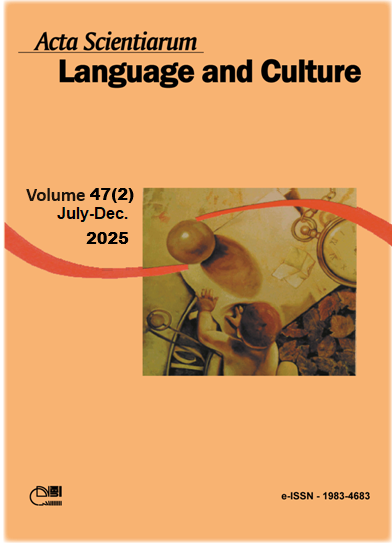“Se essa história não existe, passará a existir”: intertextualidades e (des)encontros nas trajetórias das Macabéas
Resumo
Este artigo se propõe a analisar as narrativas A hora da estrela, de Clarice Lispector (1998), e Macabéa: Flor de Mulungu, de Conceição Evaristo (2023), tendo como objetivo investigar as dinâmicas da intertextualidade na literatura comparada contemporânea, com foco nas representações das Macabéas. Nesse sentido, discutimos como a protagonista da novela – criada por Clarice Lispector – foi reinterpretada na escrevivência de Conceição Evaristo, buscando enfatizar os contrastes existentes entre os diferentes prismas narrativos. A pesquisa, bibliográfica e de cunho analítico, está fundamentada em autores como: Carvalhal (2003, 2006); Coutinho (1996, 2016); Kristeva (2005); Nitrini (2010); e Perrone-Moisés (1990). Assim, pretendemos mostrar como a intertextualidade e a literatura comparada permitem contribuir para a discussão sobre identidades, aspectos culturais e problemáticas sociais. A obra de Clarice Lispector destacou a inatividade, a pequenez e, até mesmo, o requisito da morte de Macabéa (para que o estrelato fosse conquistado), ao passo que, em sua releitura, o conto de Conceição Evaristo promove a construção de uma realidade na qual se pôde vislumbrar a existência de Macabéa (agora, como protagonista negra) em uma visão renovada, sublinhando sua destreza de sobrevivência e resistência por meio da linguagem e da ancestralidade. No contexto comparativo deste artigo, interpretamos o enunciado ‘Se essa história não existe, passará a existir’ como um testemunho referente à autoria feminina que pode ser usado para visibilizar vidas e histórias tradicionalmente obliteradas por narrativas androcêntricas.
Downloads
Referências
Carvalhal, T. F. (2003). O próprio e o alheio: ensaios de literatura comparada. Unisinos.
Carvalhal, T. F. (2006). Literatura comparada. Ática.
Christie, A. (1976). O caso dos dez negrinhos. Círculo do Livro.
Christie, A. (2011). E não sobrou nenhum. Globo.
Coutinho, E. F. (1996). Literatura comparada, literaturas nacionais e o questionamento do cânone. Revista Brasileira de Literatura Comparada, 3(3), 67-73.
Coutinho, E. F. (2016). O novo comparatismo e o contexto latino-americano. Alea, 18(2), 181-191. https://doi.org/10.1590/1517-106X/182-181
Evaristo, C. (2023). Macabéa: flor de Mulungu. Oficina Raquel.
Flaubert, G. (2017). Madame Bovary. Nova Fronteira.
Hooks, B. (2019). Olhares negros: raça e representação. Elefante.
Kristeva, J. (2005). Introdução à semanálise. Perspectiva.
Lispector, C. (1998). A hora da estrela. Rocco.
Nitrini, S. (2010). Literatura comparada: história, teoria e crítica. Universidade de São Paulo.
Perrone-Moisés, L. (1990). Literatura comparada, intertexto e antropofagia. In L. Perrone-Moisés. Flores da escrivaninha (pp. 91-99). Companhia das Letras.
Copyright (c) 2025 Valdício Almeida de Oliveira, Imara Bemfica Mineiro

This work is licensed under a Creative Commons Attribution 4.0 International License.
DECLARAÇÃO DE ORIGINALIDADE E DIREITOS AUTORAIS
Declaro que o presente artigo é original, não tendo sido submetido à publicação em qualquer outro periódico nacional ou internacional, quer seja em parte ou em sua totalidade.
Os direitos autorais pertencem exclusivamente aos autores. Os direitos de licenciamento utilizados pelo periódico é a licença Creative Commons Attribution 4.0 (CC BY 4.0): são permitidos o acompartilhamento (cópia e distribuição do material em qualqer meio ou formato) e adaptação (remix, transformação e criação de material a partir do conteúdo assim licenciado para quaisquer fins, inclusive comerciais.
Recomenda-se a leitura desse link para maiores informações sobre o tema: fornecimento de créditos e referências de forma correta, entre outros detalhes cruciais para uso adequado do material licenciado.




















6.png)









